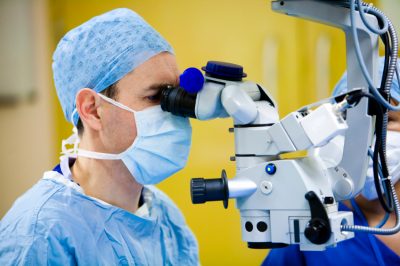The day is finally here and you are about to have cataract surgery, a safe and effective procedure. Cataract surgery recovery is short and uneventful for the large majority of patients. Naturally, this depends on you following Elmquist Eye Group’s list of do’s and don’ts after cataract surgery.
About Cataract Surgery
 Most cataract surgeries take no more than 10 minutes. The surgeon first breaks up the cataract with a laser, then removes the natural clouded lens and replaces it with an artificial lens called an intraocular lens implant. We only operate on one eye at a time. Our Elmquist Eye Group surgeons can choose a clear lens or a lens implant with vision correction. These days, there are so many options.
Most cataract surgeries take no more than 10 minutes. The surgeon first breaks up the cataract with a laser, then removes the natural clouded lens and replaces it with an artificial lens called an intraocular lens implant. We only operate on one eye at a time. Our Elmquist Eye Group surgeons can choose a clear lens or a lens implant with vision correction. These days, there are so many options.
Immediately after the surgery, we keep patients in our recovery area for about 30 minutes to one hour. This allows you to rest after surgery so that you are less groggy from sedation or anesthesia. It also allows us to monitor your progress. Someone must be present with you at the surgery to drive you home. We provide you with sunglasses to wear on the drive to protect your eyes from sunlight glare.
When You Get Home
Many patients still feel a bit groggy once they get home, so they often sleep for a few hours. This is the best option because it allows your eyes to rest after surgery. You will be wearing a protective shield over your eye. The surgeon will advise you on when to remove it. Sometimes, patients are able to remove the shield after several hours, but the shield must always be taped back in place at night or if you nap during the day. This must take place for several days to protect the eyes during sleep while your eyes heal.
We send you home with antibiotic eye drops to prevent infection and another prescription eye drop to reduce inflammation. For about a week, you apply both drops several times per day. Some patients experience more significant inflammation and may need the anti-inflammatory drops for up to one month. It is important to use both drops exactly as prescribed.
While most patients only feel slight discomfort after surgery, a patient can use an oral pain reliever like acetaminophen if it is needed.
Do’s and Don’ts for Recovery
A full recovery from cataract surgery takes about one month for the eyes to completely heal. Most patients feel great in just a few days, and make the mistake of resuming all normal activities. During the first week, it is important to limit activities, such as not driving the day after surgery and avoiding any heavy lifting or strenuous activities for a few weeks as to not put undue pressure on the eyes. Patients should also avoid bending over immediately after surgery because it puts undue pressure on the eye. Try to avoid sneezing for the same reasons.
The other big risk is infection, and patients should avoid certain activities like swimming during the first week after surgery. Furthermore, don’t expose the eyes to dust, wind, pollen or other irritants for a few weeks after surgery.
For more do’s and don’ts after cataract surgery, our team of local Fort Myers/Cape Coral surgeons is comprised of experts you can rely on for advice. Patients in southwest Florida have been trusting their eyes to Elmquist Eye Group for nearly 30 years. Call us today!
